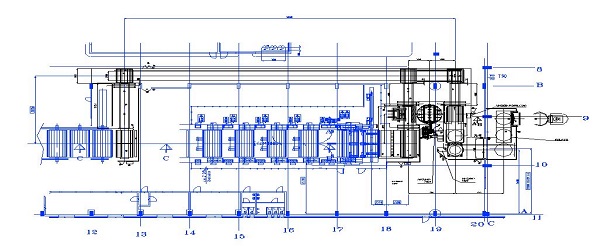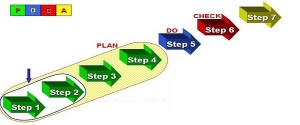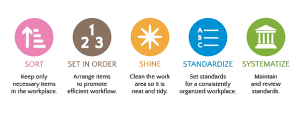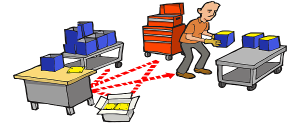
Finally, it is important to consider how the focus of the design may vary according the type of production system. In flow-shop production system the design mostly focuses on the OTE of the whole production line, whereas in job-shop production system the analysis may focus either on the OEE of a single equipment or in those of the specific shop floor, rather than those of the whole production system. This is due to the intrinsic factors that underlies a layout configuration choice.
Flow shop production systems are typical of high volume and low variety production. The equipment present all a similar cycle time1 and is usually organized in a product layout where interoperation buffers are small or absent. Due to similarity among the equipments that compose the production system, the saturation level of the different equipments are likely to be similar one each other. The OEE are similar as well. In this sense the focus of the analysis will be on loss time propagation causes, with the aim to avoid their occurrence to rise the OTE of the system.
On the other hand, in job shop production systems, due to the specific nature of operations (multi-flows, different productive paths, need for process flexibility rather than efficiency) characterized by higher idle time and higher stand-by-time, lower values of performances index are pursued.
Different products categories usually require a different sequence of tasks within the same production system so the equipment is organized in a process layout. In this case rather than focusing on efficiency, the design focuses on production system flexibility and in the layout optimization in order to ensure that different production processes can take place effectively.
Generally different processes, to produce different products, imply that bottleneck may shift from a station to another due to different production processes and different processing time of each station in accordance to the specific processed product as well.
Due to the shift of bottleneck the presence of buffers between the stations usually allows different stations to work in an asynchronous manner, consecutively reducing/eliminating the propagation of low utilization rates.
Nevertheless, when the productive mix is known and stable over time, the study of plant layout can embrace bottleneck optimization for each product of the mix, since a lower flexibility is demanded.
The analysis of quality propagation amid two or more stations should not be a relevant issue in job shop, since defects are usually detected and managed within the specific station.
Still, in several manufacturing system, despite a flow shop production, the equipment is organized in a process layout due to physical attributes of equipment (e.g. manufacturing of electrical cables showed in § 4) or different operational condition (e.g. pharmaceutical sector). In this case usually buffers are present and their size can dramatically influence the OTE of the production system.
In an explicit attempt to avoid unmanageable models, we will now provide process designers and operations managers with useful hints and suggestion about the effect of inefficiencies propagation among a production line along with the development of a set of simulation scenarios (§ 3.5).






